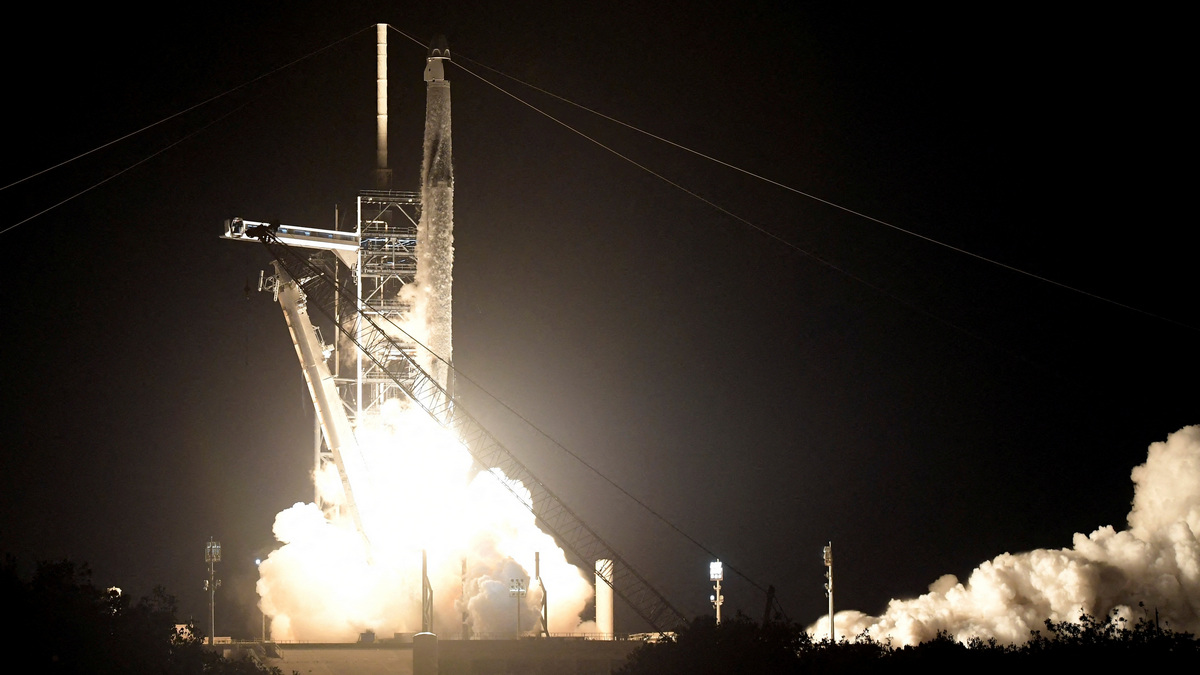Shubhanshu Shukla is finally headed to the International Space Station (ISS).
The Axiom Mission 4 (Ax-4) launched from NASA’s Kennedy Space Center in Florida today (June 25).
Shukla will now be the second Indian to make it to space and the first Indian to step foot on the ISS.
The first man to do so was Rakesh Sharma in 1984, who made history by traveling to space aboard a Soviet mission.
Axiom Mission 4, headed by Commander Peggy Whitson on the SpaceX Dragon spacecraft and piloted by Shukla, is set to reach the ISS tomorrow (June 26).
The two mission specialists are ESA (European Space Agency) project astronaut Slawosz Uznanski-Wisniewski of Poland, and HUNOR (Hungarian to Orbit) astronaut Tibor Kapu of Hungary.
The first stage of the Falcon 9 rocket has already returned to Earth.
But what do we know about the Falcon 9, the rocket that is taking Shukla and the SpaceX Dragon craft to the ISS?
Let’s take a closer look:
What do we know?
The Falcon 9 is a reusable rocket that works in two stages.
It has been designed and manufactured by SpaceX.
The idea behind the Falcon 9 was to take people and payloads into Earth’s orbit and beyond.
The company describes the Falcon 9 as “world’s first orbital class reusable rocket”.
The Falcon 9 is 70 metres tall and 3.7 metres wide.
It weighs around 550 tonnes.
It can carry a 4,020 kilo payload to Mars, an 8,300-kilo payload into Geostationary Transfer orbit and a 22,800-kilo payload into Low-Earth Orbit.
It runs on nine Merlin engines – which use grade kerosene (RP-1) and liquid oxygen.
Each Falcon 9 launch costs around $70 million.
The rocket generates over 1.7 million pounds of thrust.
The Falcon 9 works in two stages.
The first stage of the rocket returns to Earth after it achieves separation.
This allows the rocket to be reused – thus lowering the price of future missions.
It is equipped with titanium grid fins, a heat shield, and retractable landing legs
It first launched in 2018 when it carried Bangladesh’s Bangabandhu-1 satellite into orbit.
NASA in 2020 approved it to carry astronauts.
The Falcon 9 is the first commercial spacecraft system approved for regular crewed missions since the Space Shuttle era began in 1981.
The rocket thus far has a 100 per cent safety record in manned missions.
The Falcon 9 has launched over 400 times till June 2025 – with a success rate of over 99 per cent.
About Axiom 4
The mission is a collaboration between NASA and ISRO.
The space agencies are participating in five joint science investigations and two in-orbit STEM (science, technology, engineering, and mathematics) demonstrations.
Once docked, Shukla and the otherastronauts will spend about two weeks aboard the orbiting laboratory, conducting a mission comprising science, outreach, and commercial activities.
The launch comes after the mission was delayed several times.
The mission was originally scheduled for lift-off on May 29 but was then put off to June 8, then June 10 and June 11, when engineers detected a liquid oxygen leak in the boosters of the Falcon-9 rocket and NASA also detected leaks in the ageing Russian module of the International Space Station.
The launch was then planned for June 19 and then on June 22 which was put off to allow NASA evaluate operations of the ISS after repairs in the Russian module.
With inputs from agencies


)

)
)
)
)
)
)
)
)



